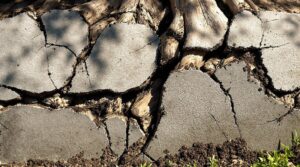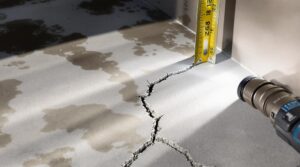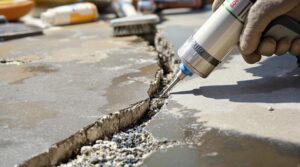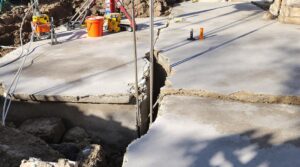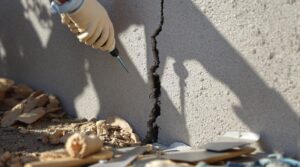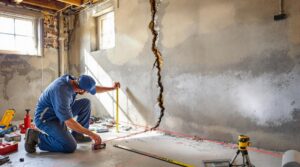Homeowners insurance policies typically cover foundation water damage from sudden and accidental events, such as burst pipes or appliance failures. Coverage includes water damage from internal sources, like plumbing leaks and appliance overflows. However, damage caused by gradual leaks, maintenance neglect, or external flooding is generally excluded. Understanding the nuances of coverage and policy limits is vital. Exploring the specifics of homeowners insurance coverage can provide clarity on protecting one's home from foundation water damage.
Key Takeaways
- Standard homeowners insurance typically covers foundation damage from sudden and accidental events, like plumbing failures or appliance overflows.
- Gradual leaks or maintenance neglect are generally excluded from coverage under standard homeowners insurance policies.
- External water damage, like flooding, requires separate flood insurance, which supplements standard homeowners insurance.
- Understanding the insurance policy's replacement cost value is crucial for assessing coverage limits for foundation water damage.
- Homeowners can take preventive measures, like maintaining gutters and downspouts, to mitigate the risk of foundation water damage.
Understanding Homeowners Insurance Coverage for Foundation Water Damage
Most standard homeowners insurance policies provide coverage for foundation water damage, but only under specific circumstances.
Homeowners insurance covers foundation damage caused by sudden and accidental events, such as plumbing or HVAC system failures. Water damage resulting from a burst pipe or overflow is generally included, but damage from gradual leaks or maintenance neglect is typically excluded.
To file a successful insurance claim for foundation damage, it is important to document the damage thoroughly and act promptly to mitigate further damage. A claims adjuster will assess the damage to determine if it is a covered peril under the policy.
If approved, the insurer may cover the costs related to water damage repair, including foundation repairs. Homeowners must navigate the claims process carefully to guarantee they receive the coverage they are entitled to.
Understanding your policy's replacement cost value is crucial when assessing foundation damage coverage limits and potential repair costs.
Types of Water Damage Covered by Homeowners Insurance
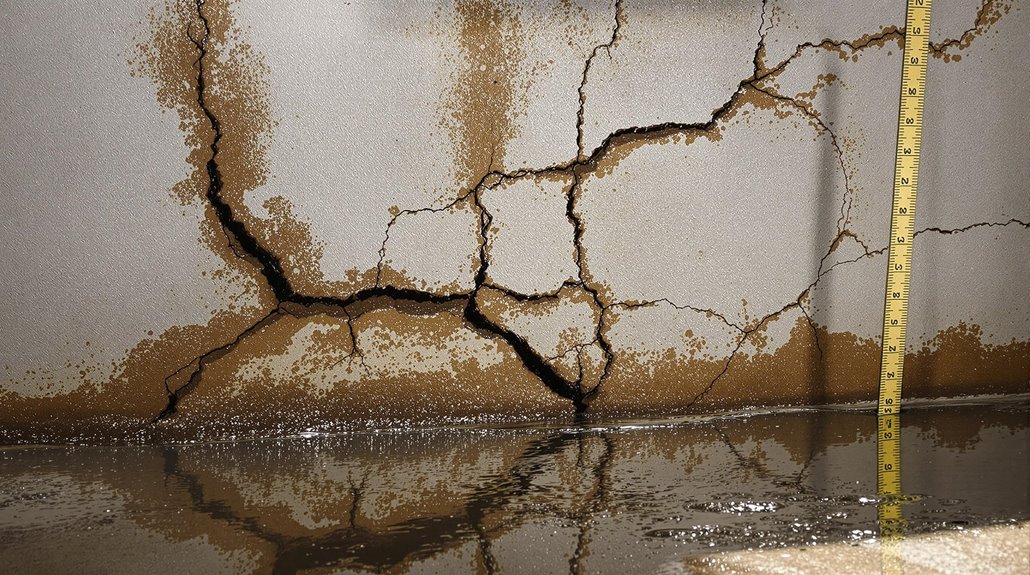
While homeowners insurance policies do not cover all types of water damage, they typically provide coverage for sudden and accidental incidents. This includes damage resulting from internal sources, such as burst pipes, HVAC system failures, or plumbing leaks.
The following types of water damage are usually covered by homeowners insurance:
- Damage from plumbing leaks, overflow from appliances, or water damage caused by firefighting efforts
- Water damage caused by vandalism, such as intentionally causing a pipe to burst
- Water damage from internal sources, such as HVAC system failures or burst pipes
Homeowners should review their insurance policy to understand specific coverage limits and exclusions related to water damage.
It is also essential to note that damage from external sources, like flooding, typically requires separate flood insurance.
Understanding the types of water damage covered by homeowners insurance can help homeowners better navigate the process of filing a claim for foundation damage.
Working with public insurance adjusters can help maximize settlements for water damage claims and ensure proper documentation of foundation issues.
Common Causes of Foundation Water Damage
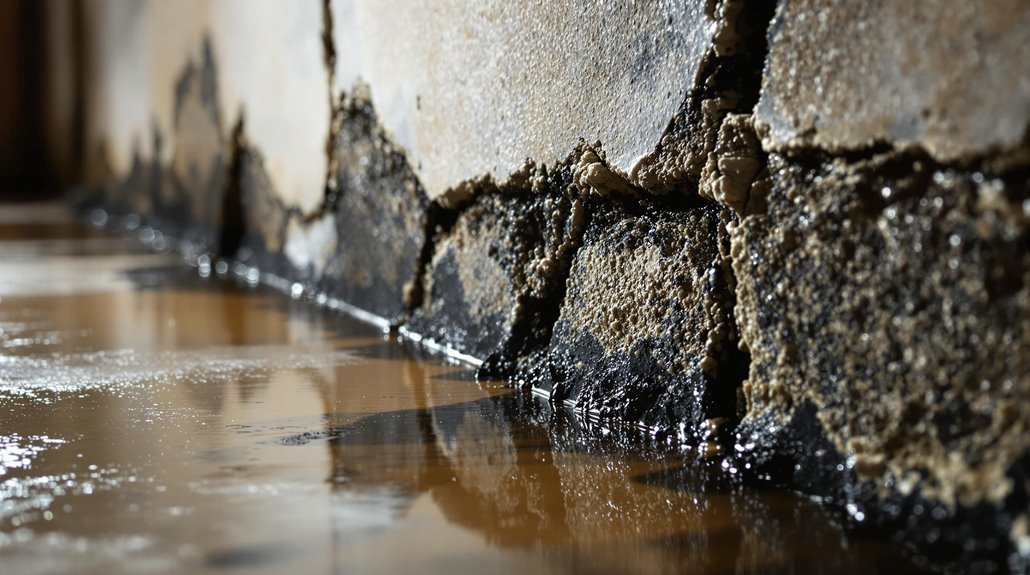
Foundation water damage can be attributed to a multitude of factors, many of which are preventable with proper maintenance and awareness.
Plumbing failures, such as burst pipes or overflowing fixtures, can lead to sudden and accidental water damage, typically covered by homeowners insurance. However, many other common causes of foundation water damage are not necessarily covered by standard insurance policies.
Heavy rainfall, poor drainage, and groundwater intrusion can contribute to structural damage over time, highlighting the importance of proper grading, drainage systems, and landscaping.
Soil movement caused by water saturation can also lead to foundation settling or cracking, which may not be covered if the damage is gradual or due to neglect. Homeowners can identify and mitigate these risks by ensuring proper water runoff and regularly inspecting their property to address any potential issues before they escalate.
Foundation Issues Not Covered by Homeowners Insurance
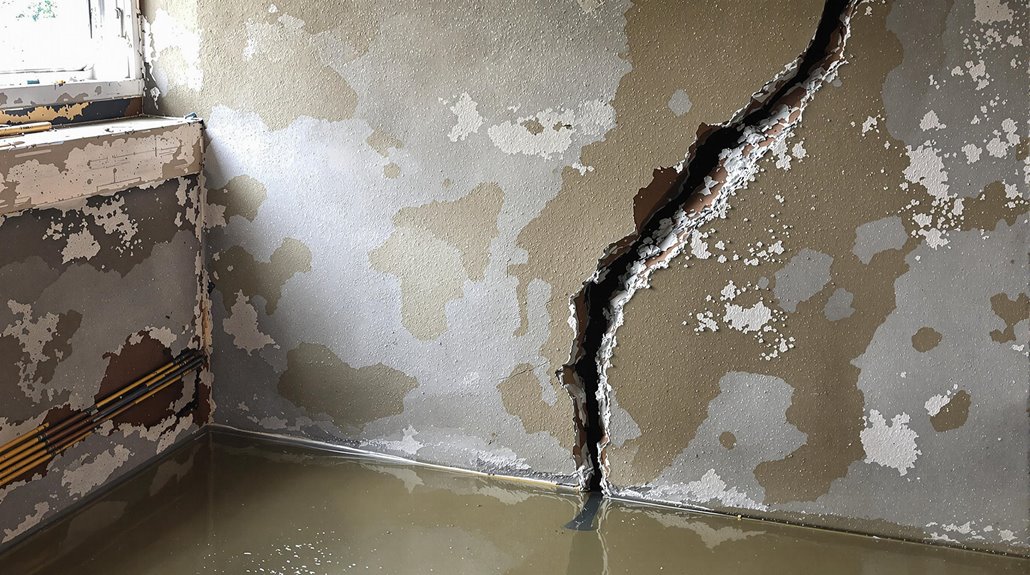
Foundation issues resulting from normal wear and tear, damage from neglect, and groundwater intrusion are typically excluded from homeowners insurance coverage.
Homeowners policies usually do not cover foundation damage caused by gradual events or maintenance-related issues, as these are seen as preventable or inevitable occurrences.
Understanding the specific exclusions and limitations of homeowners insurance is essential for homeowners to recognize the potential financial risks associated with foundation water damage.
Homeowners should note that flood insurance coverage must be purchased separately to protect against flood-related foundation damage.
Normal Wear and Tear
As a general rule, homeowners insurance policies do not provide coverage for damage to a home's foundation that results from normal wear and tear, as this type of deterioration is considered a natural and inevitable consequence of a property's aging process.
Homeowners insurance typically excludes damage caused by gradual deterioration, such as settling or frost heave, as these issues occur slowly over time.
Examples of foundation damage not covered by standard homeowners insurance include:
- Damage resulting from soil movement, such as settling or frost heave
- Moisture issues caused by groundwater intrusion through the foundation
- Foundation problems resulting from construction defects or improper installation
These exclusions highlight the importance of regular maintenance and inspections to identify potential issues before they become major problems.
Damage From Neglect
Many instances of foundation water damage can be attributed to neglect or lack of maintenance, which homeowners insurance policies typically do not cover. Insurers often exclude damage that is not caused by a sudden event, but rather results from gradual deterioration due to poor upkeep.
This includes damage caused by improper drainage systems, leading to water pooling around the foundation, and soil movement resulting from inadequate maintenance. To prevent such issues, regular inspections and preventive measures are essential.
Homeowners are responsible for maintaining their properties, and neglecting to do so can lead to denied claims for water damage affecting the foundation. Consequently, insurance doesn't cover claims related to issues that stem from poor maintenance, highlighting the importance of proactive upkeep.
Groundwater Intrusion Exclusions
While homeowners insurance provides financial protection against various risks, it typically does not cover damage caused by groundwater intrusion, which can lead to significant foundation issues.
Coverage exclusions apply to damage resulting from soil movement not caused by a covered peril, including groundwater that seeps through the foundation.
Key exclusions include:
- Damage from groundwater and surface water flooding, which requires separate flood insurance.
- Water backup due to septic tanks or drains, commonly excluded from homeowners insurance coverage.
- Gradual damage from groundwater seepage, considered a maintenance issue rather than a sudden event.
Homeowners should consult their policy details to understand the limitations related to groundwater intrusion and consider additional policies for extensive protection.
Standard homeowners insurance policies often have specific exclusions for foundation damage caused by water, emphasizing the need for careful review and supplemental insurance coverage.
Filing an Insurance Claim for Foundation Water Damage
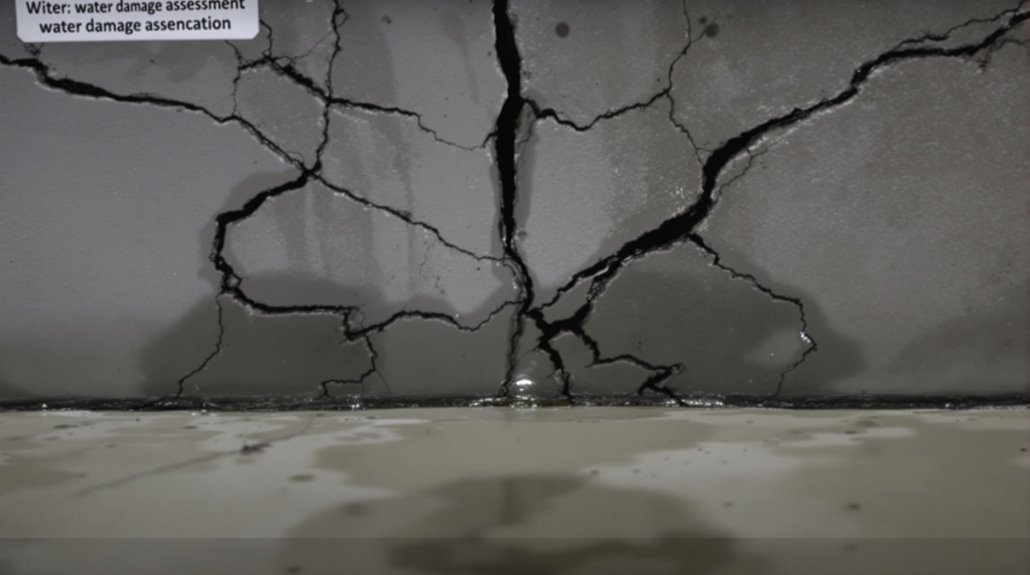
When filing an insurance claim for foundation water damage, it is vital to promptly notify the insurance company to initiate the claims process and guarantee timely assessment of the damage.
To support the claim, homeowners should gather evidence of the damage by taking clear photos or videos, which will be reviewed by the insurance claims adjuster.
Additionally, obtaining estimates from licensed contractors can provide a basis for repair costs and help substantiate the claim.
Consulting with a public insurance adjuster can be especially beneficial for negotiating fair settlements in complex water damage situations.
Steps to File Claim
Filing a claim for foundation water damage necessitates prompt action to guarantee coverage eligibility. It requires clear documentation of the damage through photos and videos to provide evidence for the insurance adjuster.
To initiate the claims process, contact the insurance company and complete any necessary claims forms with accurate and detailed information.
- When reporting water damage to the insurance company, be prepared to provide key information about the incident.
- Complete claims forms accurately, including all required documentation to expedite the claims process.
- An insurance adjuster will evaluate the damage, determining whether it falls under covered perils such as water damage from HVAC or plumbing issues, and review repair estimates from licensed contractors to determine the claim's validity.
Gather Damage Evidence Properly
To effectively navigate the insurance claims process for foundation water damage, gathering damage evidence properly is essential. A well-documented claim can expedite the assessment process and increase the chances of coverage.
| Evidence Type | Description |
|---|---|
| Visual Documentation | Photos or videos showing the extent and location of the damage |
| Maintenance and Repair Records | Records of maintenance, repairs, and receipts for work done to mitigate further damage |
| Estimates for Repairs | Detailed estimates from licensed contractors outlining necessary repairs and costs |
| Timeline of Events | Timeline of events leading up to the damage, including the origin and cause of the water intrusion |
Carefully documenting each aspect of the damage will aid in supporting the insurance claim and providing a clear understanding of the necessary repairs to restore the foundation.
Tips for Preventing Foundation Water Damage
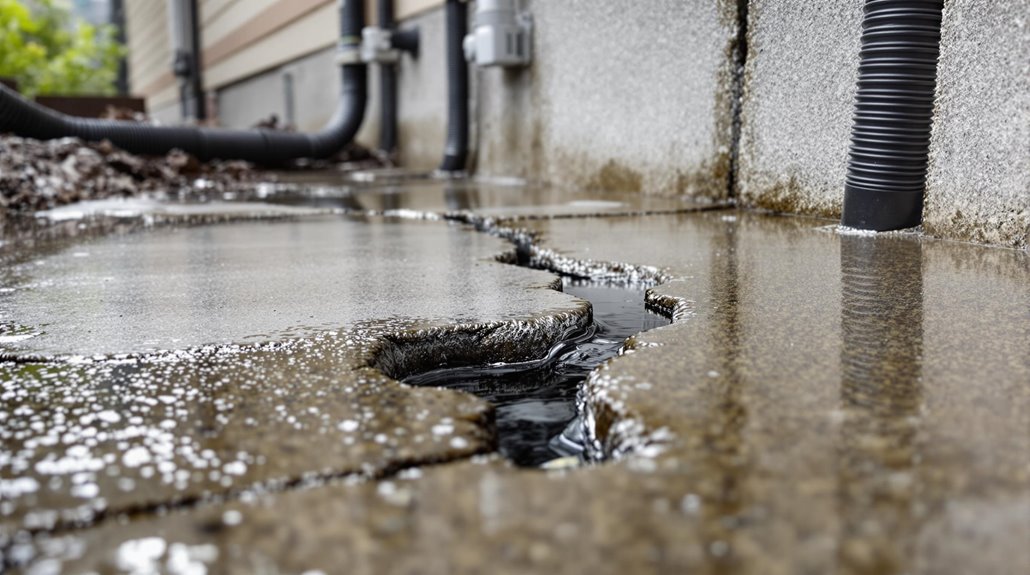
Preventing foundation water damage is essential for maintaining the structural integrity and overall value of a home. Homeowners can prevent foundation damage by ensuring proper drainage around their property.
Key preventative measures include:
- Installing a sump pump in areas prone to flooding or heavy rainfall to manage excess water and prevent it from entering the foundation.
- Maintaining gutters and downspouts to effectively direct water away from the foundation, thereby preventing accumulation around the base of the home.
- Using waterproofing sealants on basement walls and floors to protect against moisture intrusion and reduce the likelihood of water damage.
To further promote drainage, it is also beneficial to landscape the yard with a slope away from the foundation and conduct routine inspections of drainage systems, including French drains or trench drains. Keeping detailed maintenance records of all preventative measures and repairs can significantly strengthen any future insurance claims related to water damage.
Additional Coverage Options for Foundation Protection
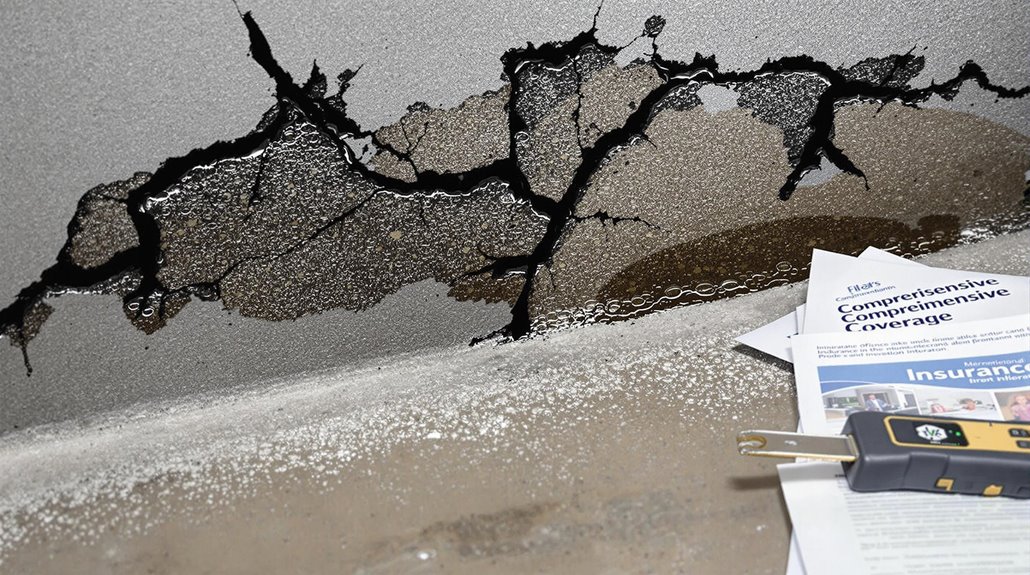
How can homeowners safeguard their properties against the potentially devastating effects of foundation water damage, particularly when their standard insurance policies may not provide adequate protection?
One approach is to explore additional coverage options beyond a standard homeowners insurance policy. For homes located in flood-prone areas, purchasing separate flood insurance is essential for thorough protection, as standard policies typically exclude flood-related damage.
Similarly, properties in seismic zones require earthquake insurance, which can help mitigate significant foundation issues resulting from earthquakes.
Homeowners can also consider supplementary policies or endorsements that extend coverage for specific risks, such as sewer backup.
Consulting an insurance agent can help identify tailored options to address unique risks and potentially mitigate costly foundation repair costs.
Frequently Asked Questions
Will Homeowners Insurance Pay for Foundation Problems?
Homeowners insurance may cover foundation repair for water damage affecting structural integrity, subject to coverage limits and policy exclusions. Successful insurance claims require prompt documentation and adherence to maintenance tips and preventive measures to mitigate risk.
Is Water Coming Through Foundation Covered by Insurance?
Hark, ye homeowners, foundation leaks belie an uncertain fate. Insurance claims for water intrusion hinge on policy limits, underwriting guidelines, and damage assessment. Exclusions typically preclude coverage for basement flooding, saddling homeowners with repair costs. To navigate this treacherous landscape, homeowners must meticulously review their policies and understand the implications of home insurance and water leaks. Many are surprised to discover that standard homeowner policies may not fully encompass the risks associated with flooding and seepage. Proactively investing in supplemental coverage can mean the difference between financial stability and overwhelming debt when the next storm hits.
What Type of Water Damage Is Not Covered by Insurance?
Typically, insurance excludes water damage from flood damage, sewer backup, maintenance negligence, natural disasters, and construction defects. Other exclusions often include plumbing issues, heavy rain, sump pump failures, and gradual wear and tear due to various reasons stated in exclusion clauses.
What Is the 80% Rule in Homeowners Insurance?
The 80% rule in homeowners insurance requires insuring the property for at least 80% of its replacement cost to avoid penalties on claims payouts, directly influencing coverage limits and the claims process, but not impacting deductibles or policy exclusions.

